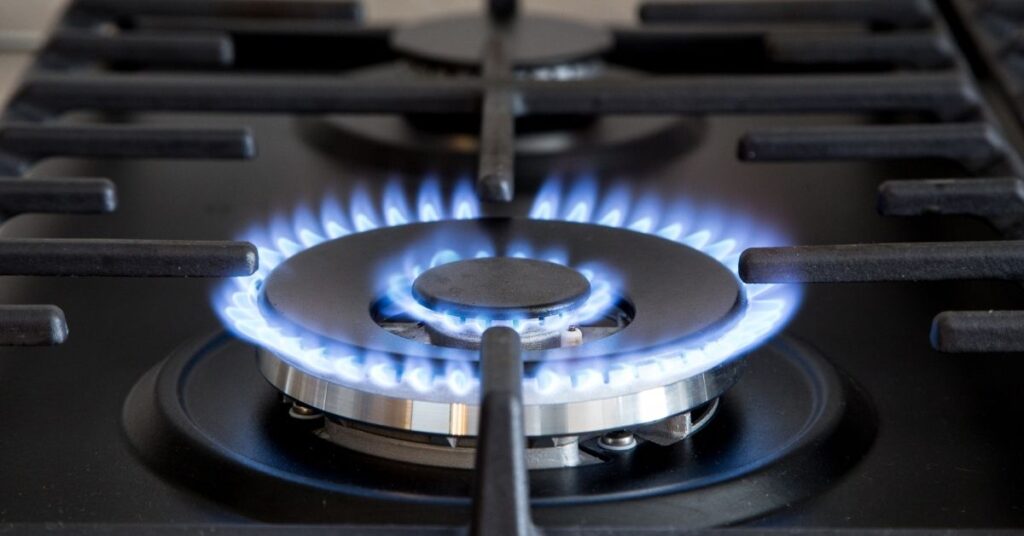Electric stove tops use between 1,200 watts for small burners and 3,000 watts for large burners.
How Much Electricity Does A Stove Top Use
Ever wondered how much that pasta dish or sizzling stir-fry is costing you in electricity? Electric stoves are kitchen staples, but they do use up precious energy. Let’s break down exactly how much power your stovetop is guzzling and some ways you can save on those electricity bills.
Understanding Stovetop Power Consumption
Electric stovetops have burners of different sizes, and those burners munch on varying amounts of electricity. Here’s a general idea:
- Small burners: Typically use around 1,200 watts.
- Large burners: Can consume up to 3,000 watts.
But, hold on! That doesn’t mean your stovetop is constantly using all that power. These are the maximum wattages. The actual electricity usage depends on how high you set the heat and for how long.
Factors Affecting Stovetop Electricity Use
Let’s look at the things that determine how much electricity your stovetop devours:
- Burner size: Unsurprisingly, bigger burners=more energy used.
- Heat setting: Lower heat settings need less continuous electricity.
- Cooking time: The longer you cook, the more energy you’ll use. It’s simple!
- Type of cookware: Heavy-bottomed pots and pans retain heat better, potentially reducing overall cooking time and energy use.
So, How Much Does It Actually Cost?
This depends entirely on your electricity rate, but we can do some general calculations. Let’s say your electricity costs $0.12 per kilowatt-hour (kWh).
| Burner Type | Wattage | Approx. Cost Per Hour (at high heat) |
| Small | 1,200 | $0.14 |
| Large | 3,000 | $0.36 |
Keep in mind, you rarely have all burners blasting on high for an entire hour. Real-world costs might be lower depending on your cooking style.
Ways to Save Electricity While Cooking
Want to ease off on those electricity bills? Here are some tips:
- Match pot size to burner: Avoid using small pots on large burners – you’re wasting precious heat.
- Use lids: Lids trap heat, helping your food cook faster and saving energy.
- Turn off burners early: Electric burners retain heat even after being switched off. Use that residual heat to finish cooking.
- Consider alternative methods: For smaller tasks, microwaves or toaster ovens can be more energy-efficient than stovetops.
Let’s Talk About Different Stove Types
Not all stoves are created equal! Understanding different stovetops can help you figure out which might be best for saving energy:
| **Type of Stove | Energy Efficiency** |
| Traditional Electric Coil | Less efficient, slow heat transfer |
| Smooth-top Electric | Slightly more efficient, easier to clean |
| Induction | Highly efficient, fastest heat-up, requires specific cookware |
Table of Average Stovetop Energy Consumption
Here’s a quick comparison of different stovetop burner sizes and their approximate usage:
| Burner Type | Size (inches) | Wattage | kWh per hour (approx.) |
| Small | 6 | 1,200 | 1.2 |
| Medium | 7 | 1,500 | 1.5 |
| Large | 8 | 1,800 | 1.8 |
| Extra-large | 9 | 2,500 | 2.5 |
Remember, these are estimates. Your actual usage will vary.
More Tips to Optimize Your Stovetop Energy Use
Let’s get strategic to make those electricity bills a bit friendlier:
- Pre-heat effectively: For ovens, preheating is essential. Stovetops? Not always. Only preheat if absolutely necessary for your recipe.
- Keep it clean: A clean stovetop transfers heat more efficiently. Leftover food and grime can hinder that process.
- Plan ahead: Batch cooking or meal prepping can save you from using your stovetop multiple times a day.
Alternative Cooking Methods
Sometimes, the stovetop isn’t the most energy-wise option. Explore these alternatives:
- Microwave: Perfect for reheating, cooking small portions, and even steaming vegetables. They generally use way less energy than a stovetop.
- Toaster oven: Great for toasting (duh!), baking small batches, or roasting vegetables. Often more efficient than your full-sized oven.
- Slow cooker: The king of “set it and forget it” cooking. Low and slow cooking can be incredibly energy-efficient.
- Pressure cooker: Cuts down on cooking time dramatically, which significantly reduces energy use.
Should You Switch Stove Types?
If energy efficiency is your top priority, an induction stovetop is the way to go. They’re incredibly efficient with lightning-fast heat-up times. However, they require specific magnetic cookware, so it might not be a quick swap for everyone.
If a full change isn’t in the cards, even small things count:
- Replacing old electric coils: Consider a smooth-top electric stovetop – better heat transfer means slightly better efficiency.
- Maintaining your stovetop: Keep your appliance in good shape for optimal performance and energy efficiency.
Conclusion- How Much Electricity Does A Stove Top Use?
How much electricity your stovetop uses depends on a lot of things – burner size, heat settings, your cooking habits. By understanding these factors and employing some smart strategies, you can keep an eye on your energy use. Remember, even small adjustments in your cooking habits can add up to savings over time.
